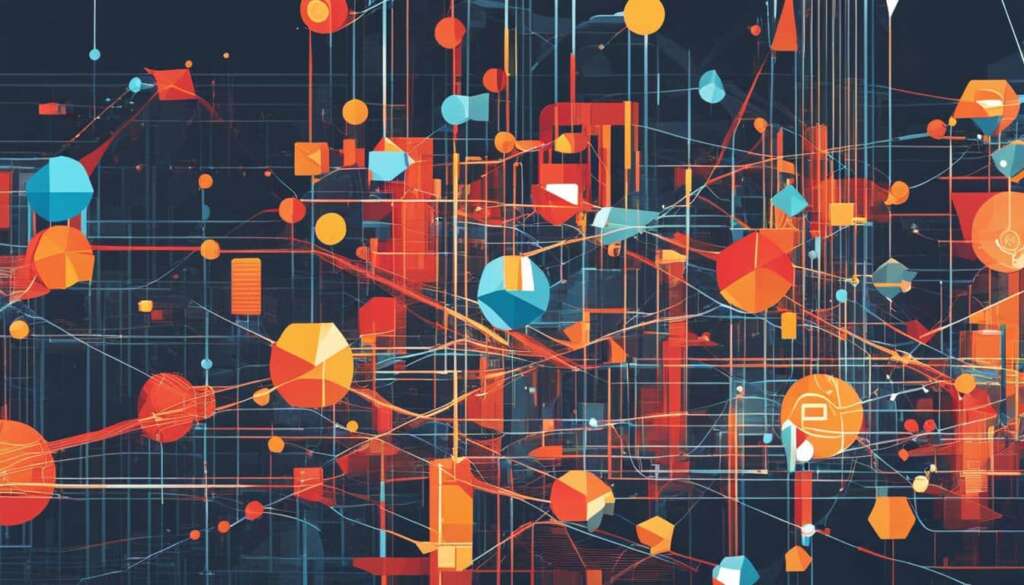Table of Contents
As teachers, it is essential to stay vigilant and ensure academic integrity in students’ work. With the emergence of AI language models like ChatGPT, it becomes crucial to identify their usage and distinguish between AI-generated responses and human interaction. ChatGPT is an AI language model that has the ability to mimic human responses and generate text-based queries.
Plagiarism, ethics, biases, and misinformation are some of the concerns associated with the use of AI tools like ChatGPT in educational settings. It is imperative for teachers to stay informed and equipped with strategies to recognize AI-generated responses and detect ChatGPT usage in student communication.
AI language model detection tools can aid teachers in identifying the usage of ChatGPT. These tools analyze language patterns, inconsistencies, and style shifts that may indicate AI-generated text. By familiarizing themselves with the unique characteristics of ChatGPT-generated text, teachers can develop a keen eye for detecting AI-generated content.
In the following sections, we will explore the use of ChatGPT in education, strategies for detecting ChatGPT in student work, and discuss the importance of maintaining academic integrity in the face of these advancements in AI technology.
Understanding the Use of ChatGPT in Education
ChatGPT has emerged as a notable form of generative AI in education, offering valuable assistance to students and educators alike. Its applications range from aiding in essay writing to generating content based on simple prompts. Although still relatively new in classrooms, ChatGPT joins the ranks of other AI tools like adaptive learning and facial recognition. While predictive text is a common feature in tools such as Google Docs or text messaging, the ability of ChatGPT to generate complete pieces of writing using AI technology raises concerns among educators. It is crucial for teachers to develop a comprehensive understanding of ChatGPT’s capabilities, limitations, and its role in educational settings.
As classrooms embrace AI tools, the integration of ChatGPT in education brings about both opportunities and challenges. It empowers students to explore their creativity and enhance critical thinking skills by using AI-generated responses. However, it is essential to strike a balance between leveraging AI for educational purposes and maintaining academic integrity. Educators must remain vigilant in ensuring that students’ work reflects their authentic abilities while utilizing AI tools as valuable aids.
One noteworthy aspect of ChatGPT is its potential to facilitate adaptive learning. By analyzing students’ responses and providing personalized feedback, ChatGPT can adapt to individual learners’ needs. This personalized approach allows students to receive tailored support, promoting a more effective learning experience.
Facial recognition technology has seen significant advancements, often assisting with various aspects of education, including attendance tracking and security. Conversely, generative AI tools like ChatGPT predominantly focus on text-based tasks. Understanding these distinctions and how they integrate into education is crucial for teachers to ethically leverage AI tools.
Predictive text is just the tip of the iceberg when it comes to generative AI like ChatGPT. Unlike predictions based on existing data, ChatGPT generates original content, leading to concerns about the authenticity of student work. Teachers must familiarize themselves with the capabilities of AI tools like ChatGPT and actively monitor their use in the classroom.
As educators navigate the integration of AI tools, they must be proactive in addressing potential challenges and ethical considerations. It is vital to emphasize critical thinking, teach students to evaluate information from various sources, and develop the skills necessary to differentiate between AI-generated content and human interaction. By nurturing a strong teacher-student connection, educators can guide students in effectively and ethically utilizing AI tools.
Benefits and Limitations of ChatGPT in Education
| Benefits | Limitations |
|---|---|
| 1. Assists with essay writing and content generation. | 1. Risk of plagiarism or lack of original thinking. |
| 2. Facilitates adaptive learning through personalized feedback. | 2. Possibility of overreliance on AI-generated responses. |
| 3. Enhances critical thinking skills by analyzing AI-generated content. | 3. Challenges in detecting AI-generated text in student work. |
Detecting ChatGPT in Student Work
Identifying and detecting the use of ChatGPT in student work is an essential skill for teachers to maintain academic integrity and uphold ethical standards. While this task may require knowledge and experience in AI models and language patterns, there are several strategies that educators can employ to identify AI-generated content and inconsistencies in student work.
One effective approach is for teachers to familiarize themselves with the unique characteristics of ChatGPT-generated text. By understanding the language patterns and phrasing commonly associated with AI language models, educators can spot potential red flags that may indicate the use of ChatGPT. These can include unusual word choices, overly complex sentences, or generic responses that lack specific details.
Additionally, plagiarism detection tools can be invaluable in identifying similarities between student work and ChatGPT-generated content. These tools compare submitted assignments against a vast database of sources, allowing teachers to identify potential instances of chatGPT plagiarism. Such tools can highlight text overlaps, shared language patterns, and repetitive phrasing that hint at the use of AI-generated text.
Language inconsistencies and style shifts can also serve as indicators of AI-generated text. When analyzing student work, teachers should pay attention to abrupt changes in tone, syntax, or writing style that deviate from the student’s usual patterns. These inconsistencies may suggest the introduction of AI-generated content within the text.
By analyzing the language patterns, utilizing plagiarism detection tools, and identifying inconsistencies, teachers can effectively detect the use of ChatGPT in student work.
Common Characteristics of ChatGPT-Generated Text
| Characteristic | Explanation |
|---|---|
| Unusual Word Choices | AI-generated text may include uncommon or idiosyncratic vocabulary. |
| Complex Sentences | AI language models often produce excessively long or convoluted sentence structures. |
| Generic Responses | ChatGPT may provide generic or vague answers that lack specific details. |
By combining these strategies and remaining vigilant, teachers can detect and address the use of ChatGPT in student work. These efforts not only promote academic integrity but also foster a deeper understanding of the ethical implications and limitations of AI-generated content.

Stay tuned for the next section where we will explore strategies that teachers can employ to effectively address and handle ChatGPT usage in the classroom.
Strategies for Teachers to Detect ChatGPT Usage
Teachers can employ several strategies to detect ChatGPT usage in student work. Familiarizing themselves with ChatGPT output by exploring and reading sample outputs can help in identifying common patterns and phrasing. The use of plagiarism detection tools like Copyscape, Turnitin, or Unicheck can assist in identifying similarities between student work and ChatGPT-generated content. Analyzing language inconsistencies, style shifts, and the flow of ideas in student work can also help in flagging potential AI-generated text. AI detection software, such as Content at Scale’s AI Detector, can further enhance the ability to detect ChatGPT-based content.
| Strategies for Detecting ChatGPT Usage | Pros | Cons |
|---|---|---|
| Familiarizing with ChatGPT output | – Helps identify common patterns and phrasing – Provides insight into AI-generated text |
– Requires time and effort to explore and read sample outputs |
| Using plagiarism detection tools | – Efficiently detects similarities between student work and ChatGPT-generated content – Widely available and user-friendly |
– May not detect more sophisticated AI-generated text – False positives or negatives can occur |
| Analyzing language inconsistencies and style shifts | – Reveals inconsistencies typical of AI-generated text – Flags potential AI usage |
– Requires knowledge of language patterns and patterns specific to ChatGPT |
| Using AI detection software | – Offers advanced AI detection capabilities – Complements manual analysis |
– Requires software implementation and potential cost |
It is essential for teachers to utilize a combination of strategies to effectively detect ChatGPT usage in student work. By incorporating a multi-faceted approach, teachers can increase their chances of accurately identifying AI-generated content and maintaining academic integrity.
Conclusion
The use of AI tools like ChatGPT in education has given rise to concerns surrounding academic integrity, plagiarism, and ethical considerations. While teachers can adopt strategies to detect the usage of ChatGPT in student work, it is crucial to foster a supportive learning environment that emphasizes the importance of originality and critical thinking.
AI detection tools can serve as valuable allies in upholding academic integrity by assisting in the identification of AI-generated content. However, it is important to note that these tools are not infallible and should be used in conjunction with teachers’ expertise and judgment.
Teachers play a vital role in maintaining academic standards and nurturing the teacher-student connection. By staying informed about the capabilities and limitations of AI tools, educators can guide students in the ethical and appropriate use of these technologies.
Ultimately, by staying proactive and well-informed, teachers can harness the power of AI technology to enhance the learning process while ensuring the maintenance of authenticity and academic integrity within educational settings.
FAQ
How can teachers tell if students are using ChatGPT?
Teachers can detect the use of ChatGPT in student work by familiarizing themselves with the unique characteristics of AI-generated text, analyzing language inconsistencies, and using plagiarism detection tools.
What is ChatGPT’s role in education?
ChatGPT is used in education to assist with tasks such as essay writing or generating content based on prompts.
Are there specific language patterns that can help identify ChatGPT usage?
Yes, by understanding the language patterns and phrasing commonly produced by ChatGPT, teachers can identify if AI language models have been used.
How can teachers analyze language inconsistencies in student work?
Teachers can analyze language inconsistencies by comparing the flow of ideas, style shifts, and phrasing within the text, which may indicate the use of AI-generated content.
What tools can teachers use to detect ChatGPT usage?
Teachers can use plagiarism detection tools such as Copyscape, Turnitin, or Unicheck, as well as AI detection software like Content at Scale’s AI Detector.
Concerns include issues of academic integrity, plagiarism, ethical considerations, biases, and misinformation that can arise from the use of AI tools like ChatGPT.







